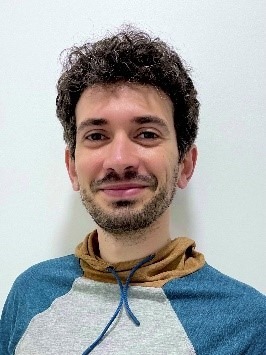Today, Doctor Mehdi Derhourhi tells us about his career as well as his projects in bioinformatics and the contribution of this field to research projects.

Dr. Mehdi Derhourhi
Research Engineer in Bioinformatics, responsible for the bioinformatics platform of UMR 1283/8199
Can you explain to us what led you to specialize in bioinformatics and the interest for you in combining this discipline with research?
Following a 1st year of medicine, I directly integrated a License 2 in biochemistry, a discipline that I had greatly appreciated during this year of medicine for the scientific reflection aspect and its fundamental science side. I then continued with a master’s degree oriented towards research in biology – health.
There I discovered the field of genetics, and in particular high-throughput sequencing techniques. They promised major advances in the understanding of biology at its most fundamental level, using a high level of technology. For me, it was the future, a huge intellectual challenge, and the opportunity to be part of an announced revolution. I continued in this field during my end-of-master internship, which led me to join the laboratory of Professor Philippe Froguel, already very recognized at the time. I continued my master’s degree with a thesis, during which I naturally turned to computer science and data analysis, a subject with which I had affinities.
At the end of my thesis, a place became available in the bioinformatics team of the laboratory and I seized this opportunity. After 3 years, I am now responsible for the laboratory’s bioinformatics team, which allows me to be involved in the majority of the laboratory’s work, which involves computer analysis of genetic data, a field in full development and has become essential for research projects.
Can you explain to us what bioinformatics consists of and its place in research today?
Bioinformatics is the analysis of biological data using computer tools. It applies to a wide variety of fields, ranging for example from the modeling of extinct species in paleontology to the design of new molecules in pharmacology. With the technological development of analysis and measurement methods, the volumes and complexity of the data generated has become such that it is essential to use computers to exploit them.
Virtually all research projects in genetics today involve the use of bioinformatics. It intervenes at all stages, from the design of the project to the final analysis of the results. To give you an idea, when a patient sees their genome sequenced, the data obtained by the sequencer is like a huge puzzle of several billion pieces, which must first be put back in the right order before they can be used. Solving this puzzle is impossible without sufficient computer power. Not to mention that this data takes up a lot of space, the equivalent of all the space available on a conventional computer for a single patient!
In some cases, data analysis requires the intervention of specialized personnel, bioinformaticians, who have advanced skills in both computer science and biology, and who collaborate directly with researchers, allowing them to exploit their data as well as possible in order to answer their questions. It is a field in full development which must constantly adapt to progress and technical changes, and which is set to take on even more importance in the future, in particular with the advent of precision medicine. It promises everyone a personalized treatment, in particular thanks to the sequencing of their genome. However, one of the big challenges will be to absorb and analyze all the data that this will generate!
What does the PreciDIAB project bring to your team?
The PreciDIAB project allowed us to scale up our analysis capabilities. Given that several thousand patients must have their genome sequenced, and that each of them requires several days of processing on a conventional computer server, we had to adapt our analysis capacities to absorb the volume of data generated, but also to be able to store them.
This project has therefore enabled us to acquire new analysis and storage solutions, including a unique technology in France using graphics cards, which are usually seen more in the field of artificial intelligence or 3D modeling. , but which are beginning to see their scope widen. Thanks to this, in some cases, we were able to speed up our calculations by a factor of 10! This new infrastructure allows our laboratory and the PreciDIAB National Center to be able to project itself serenely from an IT point of view for the years to come, and to carry out research projects on a scale worthy of the largest international centers.
Thus, the mass of data generated by the various clinical studies of the National Center will allow its researchers and clinicians to answer many clinical questions and ultimately to provide concrete solutions for patients. As such, I invite you to discover the last two publications on clinical cases carrying mutations involved in nephrolithiasis and in a particular form of diabetes. It is a source of pride for my whole team to participate in such projects which provide answers to patients!
Discover the interviews...
Nutritionist, specialist in endocrinology and metabolic diseases, and head of the Nutrition & Physical Activity Department at the Institut Pasteur de Lille (IPL).
Research director at Inserm, scientific manager of the center’s diabetes genomic medicine programs, head of EquipEx LIGAN-PM and team leader at UMR 1283/8199
Neurologist at Lille University Hospital and researcher at Inserm.
Professor of medical pharmacology Director of the Clinical Investigation Center (CIC 1403 Inserm-CHU de Lille) and of the Clinical Trial Unit dedicated to diabetes.
PhD, e-One Health professor and director of the Multi-Omics Statistics Department at the University of Surrey, associate researcher at the University of Lille, and in charge of the “studies of links between diabetes and cancer risks” project within the Center National PreciDIAB
Physiology & Cardiovascular Functional Explorations CHU Lille, Inserm U1011
University professor – Hospital practitioner in the acute geriatric medicine department, specialist in the course of care, drug interactions and artificial intelligence.
Professor of biochemistry and researcher at UMR 1011 Nuclear Receptors, Cardiovascular Diseases and Diabetes.
Department of Endocrinology Diabetology, Nutrition Metabolisms of the University Hospital of Lille.
Previous
Next



